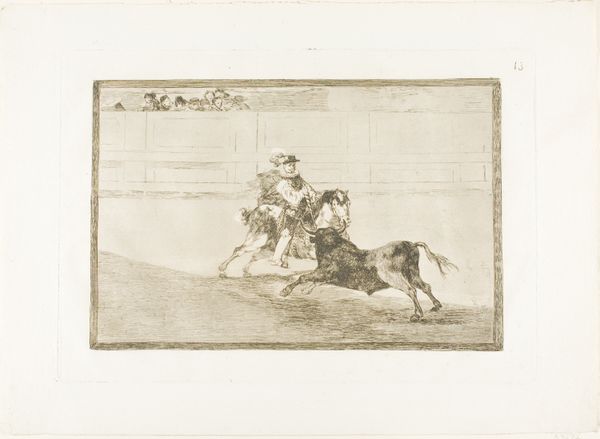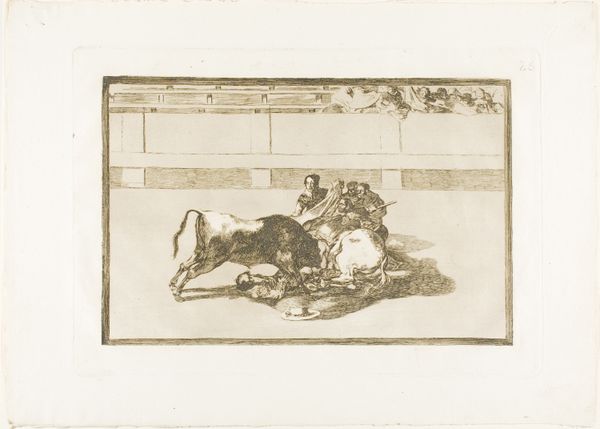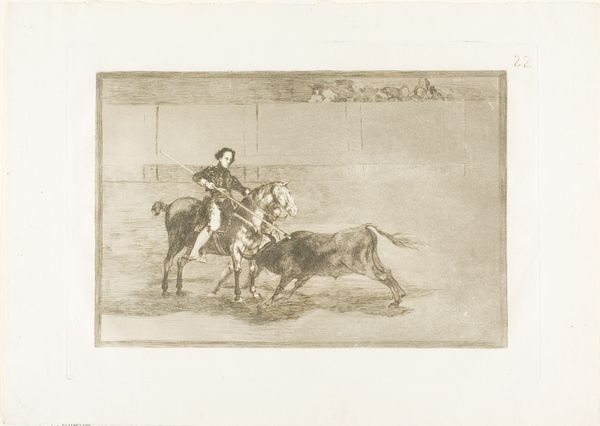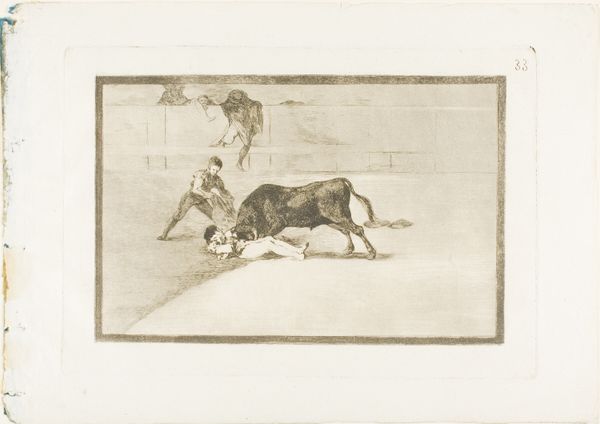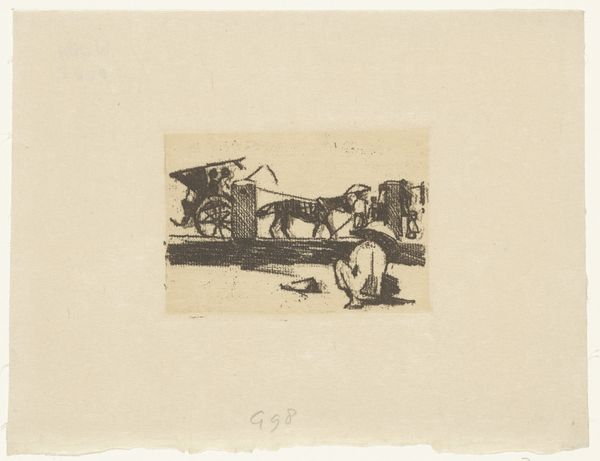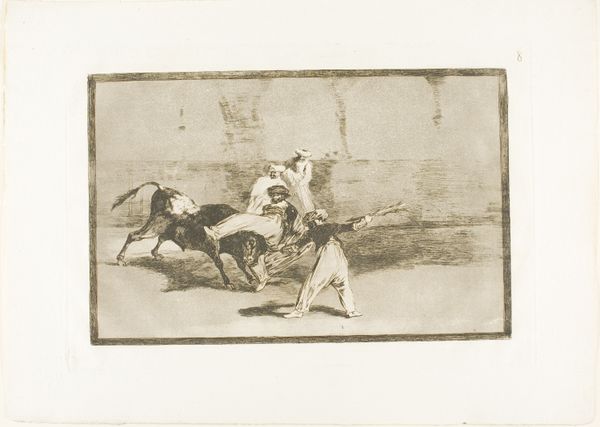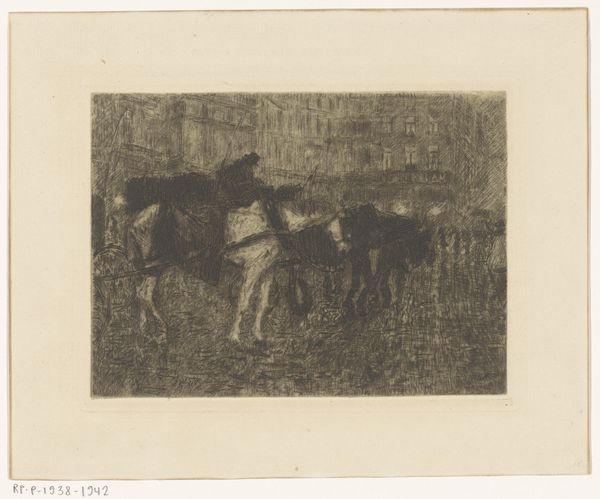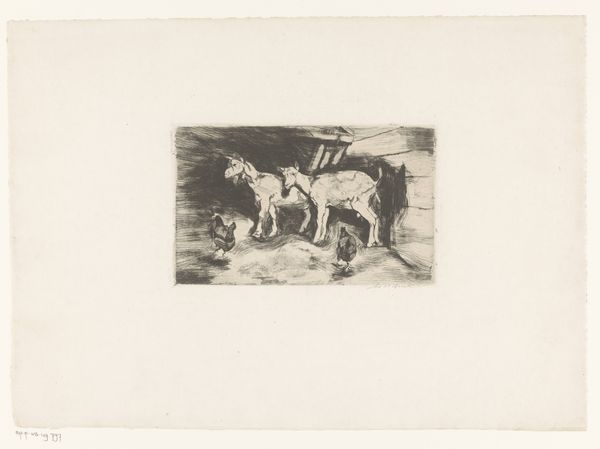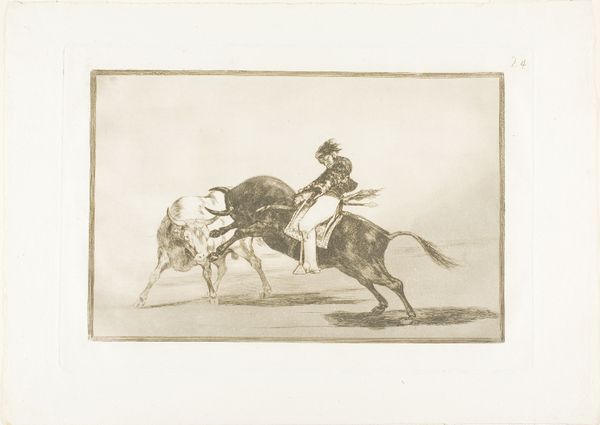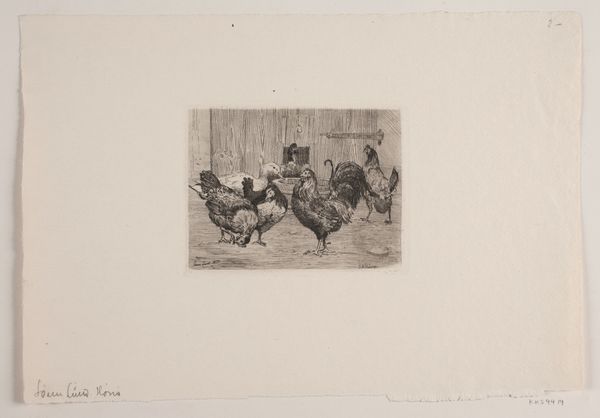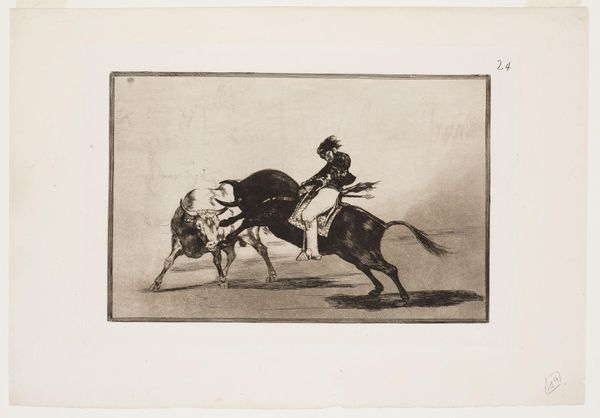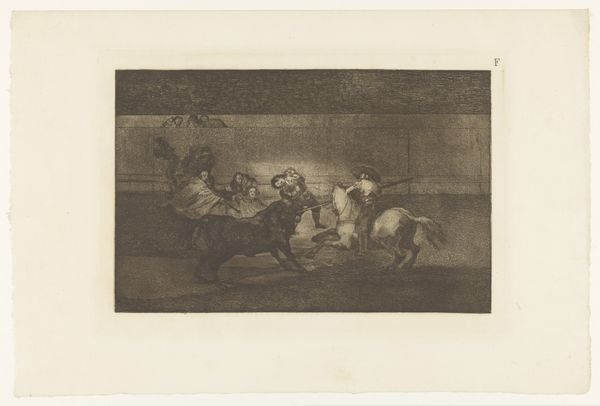
Dimensions: height 247 mm, width 355 mm
Copyright: Rijks Museum: Open Domain
Curator: This print, titled "Stierenvechter in een arena", was completed by Francisco de Goya in 1876. The piece currently resides in the Rijksmuseum, it's rendered as etching and embodies a landscape orientation. What's your immediate impression? Editor: It's immediately visceral. The drama of the bullfight is palpable, and even in this small scale, Goya conveys the intense energy and almost primitive dance between man and beast. Curator: Precisely. The composition utilizes a dynamic interplay of light and shadow, almost as if constructed in zones across the arena’s flattened space. Goya masterfully uses the etching technique to suggest volume, motion, and depth through varying densities of lines. Editor: Thinking about materiality, the etching process itself—the biting of the acid into the metal plate, the labor of pulling each print—feels analogous to the violent engagement in the bullring. Each impression is a testament to a harsh physical process mirroring the arena's violence, creating multiples for wider consumption. Curator: Interesting parallel. I would simply draw attention to the way Goya abstracts certain forms while elaborating others to guide the eye toward the primary subject, that charged point of intersection. It’s about the spatial arrangement and rhythmic ordering. Editor: The setting also emphasizes a social framework: the spectators forming an implied context that’s equally important in creating this narrative. You’ve got the consumption of sport in both production of print and ritualistic social setting of a bullfight. Curator: One could argue that it critiques rather than celebrates the spectacle. But it is Goya’s control over form and perspective—its radical design that really commands our reading of it. Editor: I suppose my materialism sees even the formal choices themselves embedded within their cultural and material conditions, right? From labor to viewing patterns—this print invites many entry points into his work. Curator: Ultimately, it prompts contemplation of technique and its effects and invites diverse critical interpretations depending on the framework of the viewer. Editor: A print of enduring cultural power and material interest—thanks to Goya's compelling engagement with a particular time, culture, and tradition.
Comments
No comments
Be the first to comment and join the conversation on the ultimate creative platform.
